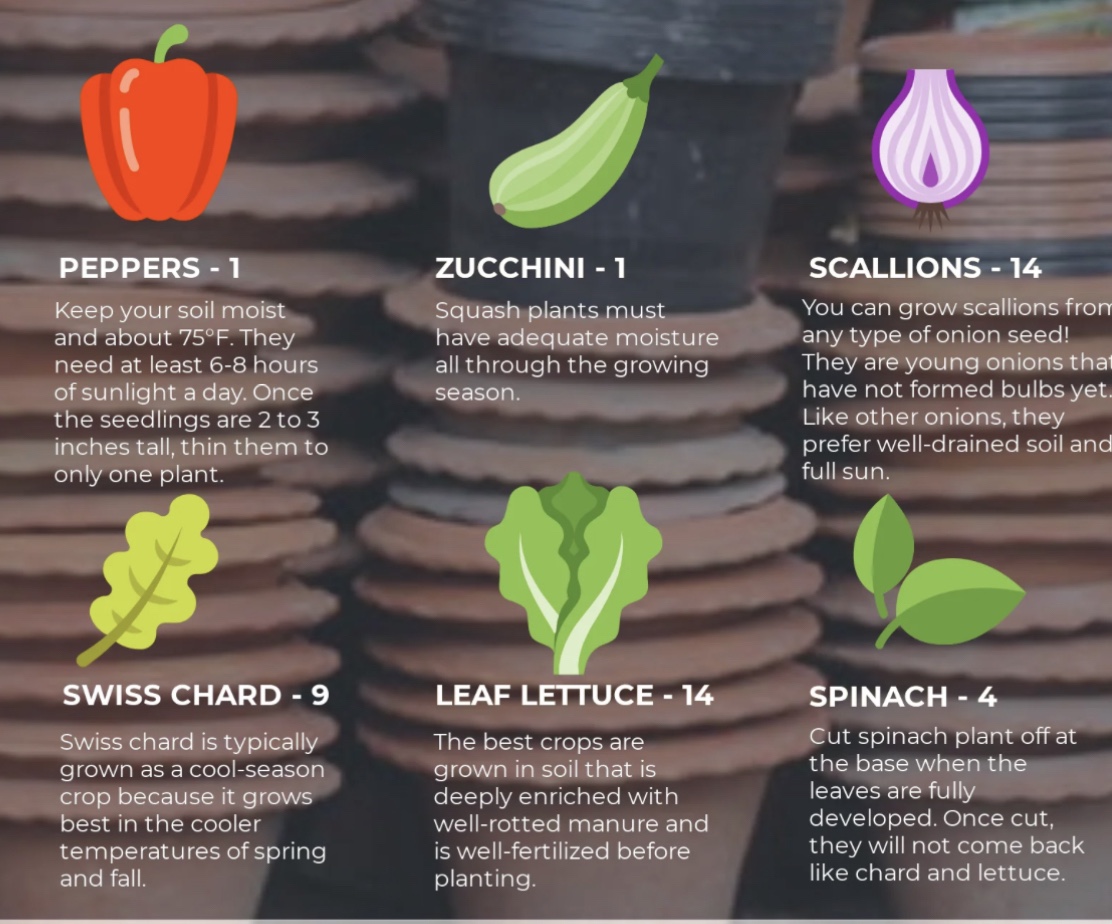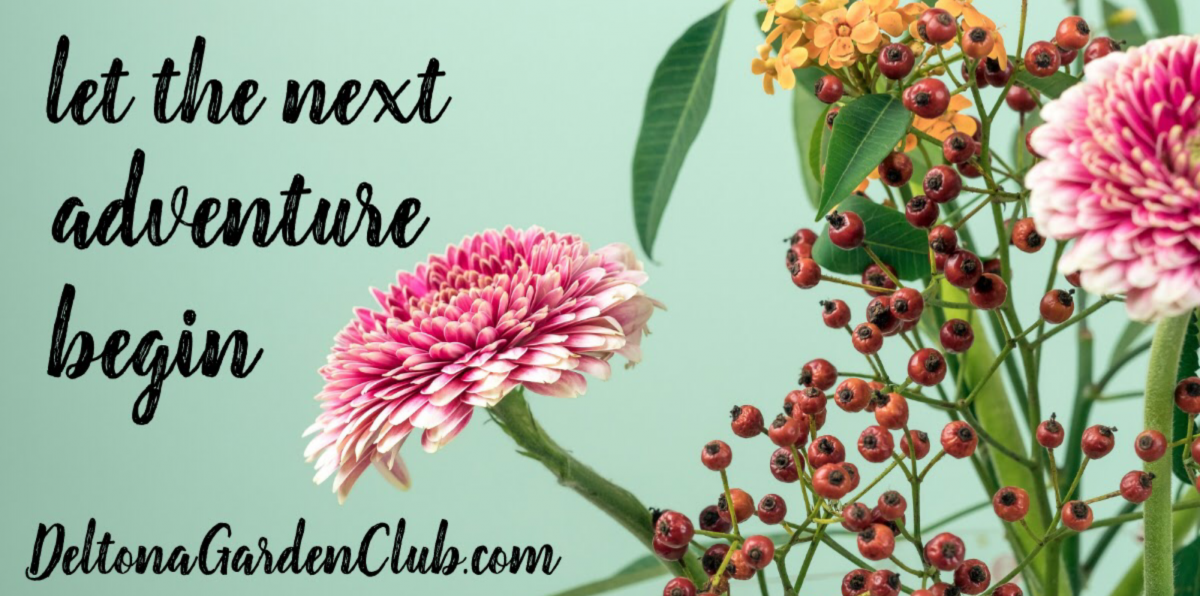- Container Gardeningby #DeltonaGardensHere is a suggested number of plants that will grow successfully in a 12″ container. It would be a waste of money and time to … Continue reading “Container Gardening”
- Fig Trees: How to Grow and Care for them for Maximum Resultsby #DeltonaGardensBy Jennifer Poindexter Figs are a delicious fruit that are high in fiber and filled with flavor. You may use figs for everything from making … Continue reading “Fig Trees: How to Grow and Care for them for Maximum Results”
- National Food is Medicine Day – Sept 14by #DeltonaGardensNational Food is Medicine Day is celebrated in the United States every year on September 14. Health and food organizations use the day to raise … Continue reading “National Food is Medicine Day – Sept 14”
- *FREE* MAMMOTH RED ROCK CABBAGE SEED KITby #DeltonaGardensCabbage is an annual cool-season crop, hardy to frost and light freezes. A smaller cabbage head has better flavor and can stay in the field … Continue reading “*FREE* MAMMOTH RED ROCK CABBAGE SEED KIT”
- Hopley’s Purple Oreganoby #DeltonaGardensPlant Specifications Specs: Oregano laevigatum (hopley’s purple) Perennial. Half Day Sun. Height: 6-10” when blooming up to 14” tall.Spread up to a width of Dark … Continue reading “Hopley’s Purple Oregano”
- How to Grow Star Anise (Illicium verum)by #DeltonaGardensBy Jennifer Poindexter Are you trying to utilize your grow space by filling it with both beautiful and functional plants? If so, star anise might … Continue reading “How to Grow Star Anise (Illicium verum)”
- How to Grow Ginger in Water Without Soil: Easy Hydroponic Guideby #DeltonaGardensHow to Grow Ginger in Water Without Soil: Easy Hydroponic Guide Are you interested in growing ginger in the comfort of your home, with minimal … Continue reading “How to Grow Ginger in Water Without Soil: Easy Hydroponic Guide”
- How to Compost at Home for Beginners: Easy Guide & Tipsby #DeltonaGardensHow to Compost at Home for Beginners: Easy Guide & Tips Composting is an eco-friendly way to reduce waste and produce nutrient-rich soil for … … Continue reading “How to Compost at Home for Beginners: Easy Guide & Tips”
- Bumbling in Basketsby #DeltonaGardensThe annual American basket-flowers are nearing the end of their cycle. There are still a few stalwarts blooming, but basket-flower foliage is crispy,… Bumbling in … Continue reading “Bumbling in Baskets”
- Victory Gardenby #DeltonaGardensWhat is a “Victory Garden”? Growing your own “Victory Garden” food has traditionally been used as a successful safeguard against food shortages and stretching the … Continue reading “Victory Garden”
Blog
Container Gardening

Here is a suggested number of plants that will grow successfully in a 12″ container. It would be a waste of money and time to start more seeds than you’ll need so here’s a simple guideline of where to get started.
Growing in containers is a fun and easy way to start vegetable gardening. They are ideal for anyone with a patio, balcony or rooftop garden. They also are popular among those who rent their home.

- CARROTS – 14
- BROCCOLI – 1
- RADISH – 13
- COLLARD GREENS – 1
- CUCUMBER – 1
- TOMATO – 1

- PEPPERS – 1
- ZUCCHINI- 1
- SCALLIONS- 14
- SWISS CHARD – 9
- LEAF LETTUCE -14
- SPINACH – 4
Fig Trees: How to Grow and Care for them for Maximum Results

By Jennifer Poindexter Figs are a delicious fruit that are high in fiber and filled with flavor. You may use figs for everything from making …
Fig Trees: How to Grow and Care for them for Maximum Results
National Food is Medicine Day – Sept 14

National Food is Medicine Day is celebrated in the United States every year on September 14. Health and food organizations use the day to raise …
National Food is Medicine Day – Sept 14
*FREE* MAMMOTH RED ROCK CABBAGE SEED KIT

Cabbage is an annual cool-season crop, hardy to frost and light freezes.
A smaller cabbage head has better flavor and can stay in the field longer without splitting.

To keep them small, plant close together or, when the head is almost full, give the plant a sharp twist to break up the roots. 😀
Cabbage is a wide spreading foliage plant with handsome leaves that form a tight, hard ball head on a strong central stem.
Young plants may bolt if grown at 50F for a long time; however mature plants of late varieties improve flavor in cold weather.
Did you know? Cabbage is an excellent source of vitamin C!
It also contains significant amounts of glutamine, an amino acid that has anti-inflammatory properties.
Cabbage can also be included in dieting programs, as it is a low calorie food.
How to Plant
Heads must feel hard and solid before cutting. When harvesting, use a sharp knife to cut the head off at the base of the plant, keeping a few outer leaves to protect the head.
In rows 2 1/2 feet apart, with 12-16 inches between plants. For late varieties, rows 3 feet apart and plants 2 feet apart.
How to Harvest Cabbage
The heads must be harvested promptly, or they deteriorate in the field. If there is ample cool and dry storage space, the heads may be harvested and stored for use. Or the ripe heads can be stored in the field by stopping plant growth.
To do this, pull the plant up slightly from the ground until a few roots can be heard snapping.
This will hold the plant for a short while until it can be picked. Some European gardeners have reported success in storing cabbage plants by burying them upside down in a deep soil pit with a thin straw flooring and covering them completely with soil to just below the frost line, with another straw mulch on top.
If you missed the free seed sales, keep checking back and subscribe!
Hopley’s Purple Oregano
Plant Specifications

Specs: Oregano laevigatum (hopley’s purple) Perennial. Half Day Sun. Height: 6-10” when blooming up to 14” tall.
Spread up to a width of Dark purple, green foliage, very attractive with its light scent and flowers.
Blooms a lot throughout the Summer, from May through August.
In the Garden
Hopley’s Oregano is generally considered to be drought resistant but it is not winter hardy. Plant it in a well-drained soil where it will get full sun and be sure to not overwater. The foliage is low growing but the flower stalks can reach up to 2 feet in height. Pruning will help keep your plant from becoming overgrown and when it dies back in the winter, simply cut it back to the ground and it will usually come back in the S
Plant Uses
Hopley’s Oregano is more of an ornamental oregano, but it can also be used as a culinary herb. It has a mild “oregano” flavor when compared to other types of Oregano. In the garden, Hopley’s Oregano produces hundreds or even thousands of tiny purple or lavender color blooms. You can harvest the flowers when they are brightest and use them in fresh flower arrangements or dry them by hanging them upside down.
How to Grow Star Anise (Illicium verum)

By Jennifer Poindexter Are you trying to utilize your grow space by filling it with both beautiful and functional plants? If so, star anise might be …
How to Grow Star Anise (Illicium verum)
How to Grow Ginger in Water Without Soil: Easy Hydroponic Guide

How to Grow Ginger in Water Without Soil: Easy Hydroponic Guide Are you interested in growing ginger in the comfort of your home, with minimal effort…
How to Grow Ginger in Water Without Soil: Easy Hydroponic Guide
How to Compost at Home for Beginners: Easy Guide & Tips

How to Compost at Home for Beginners: Easy Guide & Tips Composting is an eco-friendly way to reduce waste and produce nutrient-rich soil for …
How to Compost at Home for Beginners: Easy Guide & Tips
Bumbling in Baskets

The annual American basket-flowers are nearing the end of their cycle. There are still a few stalwarts blooming, but basket-flower foliage is crispy,…
Bumbling in Baskets
Victory Garden

What is a “Victory Garden”?
Growing your own “Victory Garden” food has traditionally been used as a successful safeguard against food shortages and stretching the family food budget to feed your family.
The practice of starting a “Victory Garden” started in 1943 as a way to help feed the American family to offset food shortages when much of the food supply was being directed to our troops during World War 11.
“We want to give every home-gardener easy access to tomato seeds, an abundant tomato harvest of nourishing fruit, and seeds for the future.”
– Gary Ibsen and Dagma Lacey
Did You Know?
One tomato seed can provide you as much as thirty pounds of tomatoes and enough of your own seeds to provide you future crops.
Today, the food supply and health of Americans are facing challenges. As a nation, we do not eat enough fruits and vegetables. To make matters worse, much of our fresh foods travel long distances before they arrive at our homes, thereby losing precious nutrients along the way. A substantial portion of this food is grown with injurious pesticides. The increasing food prices (especially for organic food) only magnifies the problem. It is understandable why home gardening is making a resurgence. We are saving ourselves in the process.
If you do not have much of a yard, do not be deterred from growing a garden. Even an 8′ x 8′ garden can grow lots of food.
Ten Reasons to Grow Your Victory Garden Now:
1 Growing your own vegetables is a good way to save money.
2 You can avoid eating harmful pesticides
3 Homegrown vegetables provide you more nutrition and flavor.
4 Growing foods from your garden will support opportunities for precious bonding experiences with family and friends.
5 The activity of gardening allows you to control much of your food supply and enhance your self-reliance.
6 Gardening will provide you fresh air, outdoor exercise, a connection with the earth and a joyful sense of purpose.
7 By saving seeds from your harvest you will own the future of your foods rather than depending upon other interests.
8 Gardening is a great activity to help relieve stress and improve restfulness.
9 Responsible gardening can reduce your carbon footprint.
10 All gardeners live longer!
